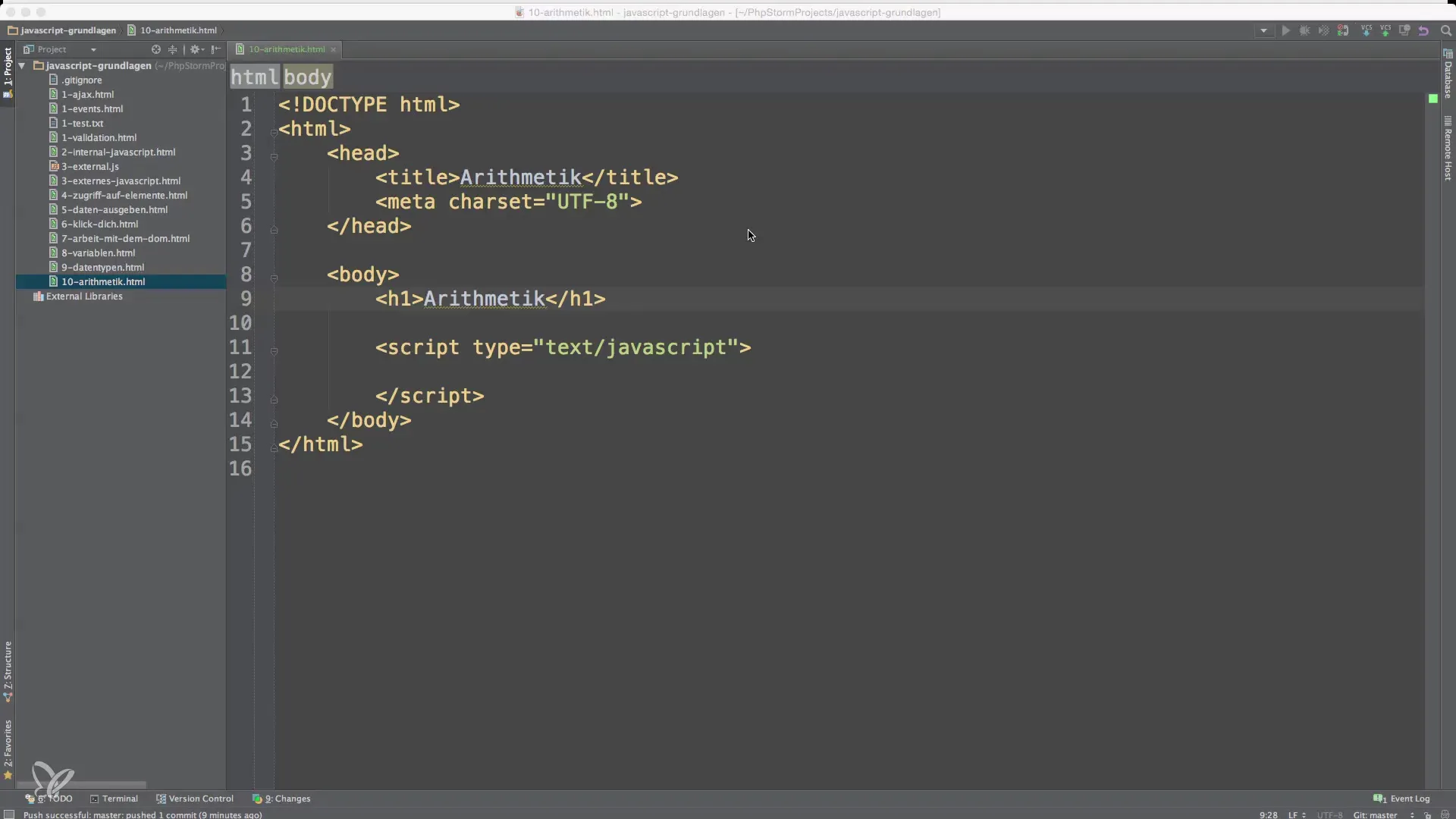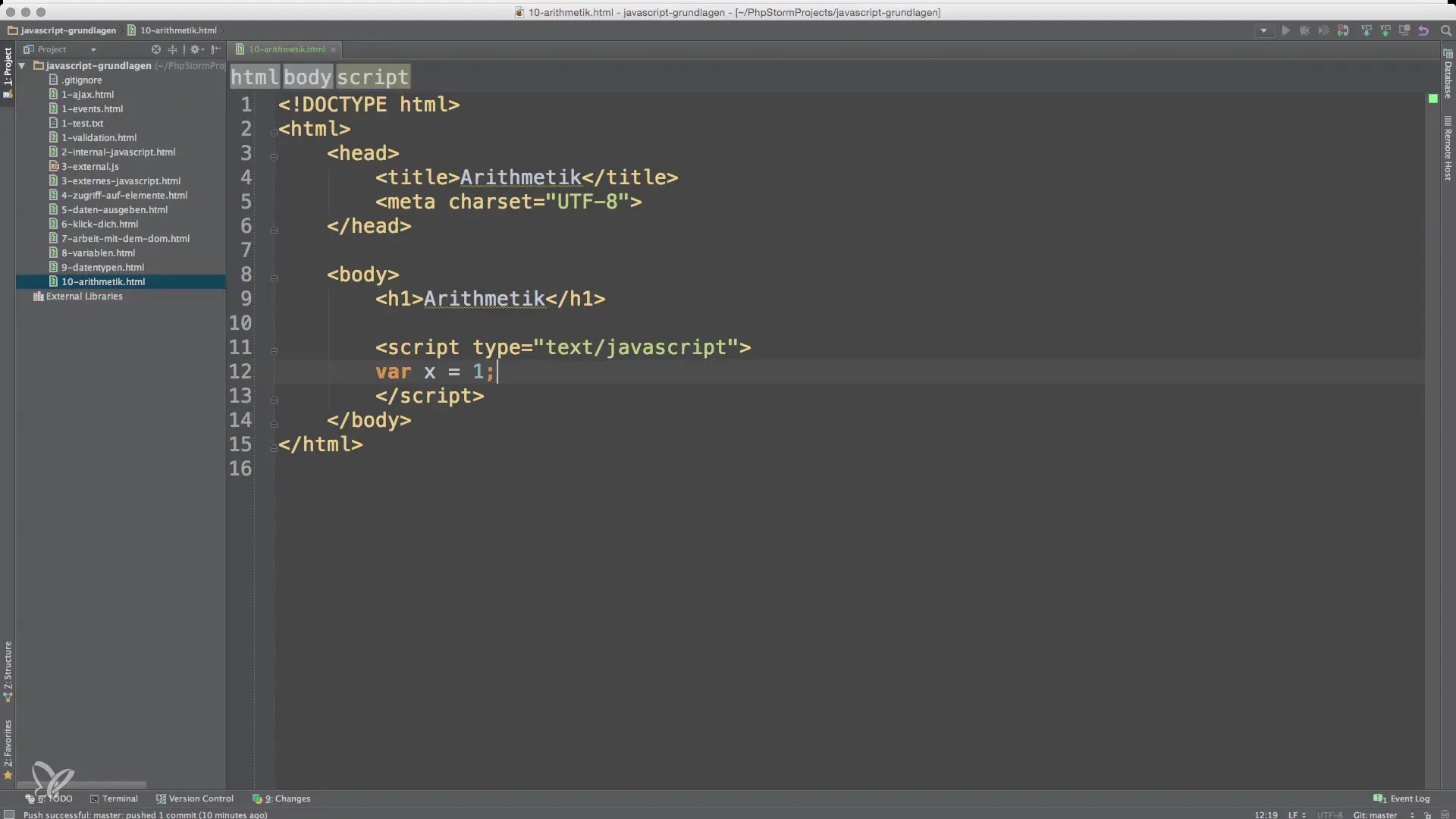JavaScript is the backbone of many web applications. One of the fundamental skills you need to master is arithmetic. Performing calculations with numbers is not only a cornerstone of programming but also a prerequisite for more complex functions. Whether it involves simple calculations or more complex mathematical operations, JavaScript provides you with all the tools you need. Let’s dive into the world of arithmetic and learn about the basic operations that exist in every programming language.
Key Insights
- Basic arithmetic operations: addition, subtraction, multiplication, and division
- Modulo operation to determine the remainder
- Incrementing and decrementing variables
- Use of parentheses to control the priority of calculations
Step-by-step Guide
1. Understanding Basic Arithmetic Operations
In JavaScript, you can easily perform basic arithmetic operations like addition, subtraction, multiplication, and division. You start by defining variables.

Here is a simple example: Set ( x = 1 ) and ( y = 2 ). When you calculate ( x + y ), you get 3.
The same goes for the other basic arithmetic operations. For example, when you calculate ( x - y ), you get -1.
2. Applying Multiplication and Division
For multiplication, you use the asterisk (*), while for division you use the slash (/). For example:
When you calculate ( 1 * 2 ), you get 2. And for ( 10 / 2 ), the result is 5.
You can now link all four basic arithmetic operations in a program to see how they work together.
3. The Modulo Operator
The modulo operator (%) is useful for determining the remainder of a division. For example, when you calculate ( 10 \mod 2 ), you get 0, because 2 fits exactly into 10 without leaving a remainder.
However, when you calculate ( 11 \mod 2 ), there is a remainder of 1, because 2 fits completely into 11 five times, with 1 left over.

This operator is especially useful if you want to check whether a number is even or odd. If the result of the modulo operation with 2 is 0, then it is an even number.
4. Incrementing and Decrementing
Incrementing and decrementing are two more important arithmetic operations. Use ( ++ ) to increase a value by 1 and ( -- ) to decrease it by 1. For example:
If you have a counter that is ( 1 ), you can use ( counter++ ) to increase it to ( 2 ).
5. Priority of Operations
The order in which operations are performed is similar to mathematics. Multiplication and division take precedence over addition and subtraction. You use this when you are performing complex calculations and want to ensure they are evaluated correctly.
By using parentheses, you can influence the order of calculations. For example, ( (1 + 5) * 2 ) will first evaluate ( 1 + 5 ) and then multiply the result by ( 2 ). The result is 12.
6. Using Parentheses for Complex Calculations
Adding parentheses to your expressions helps clarify the order of calculations. For example, if you write ( 1 + (5 * 2) ), ( 5 * 2 ) is calculated first, and then 1 is added.

This allows you to have a clearer structure in your code and avoids misunderstandings during calculations.
Summary – Fundamentals of Arithmetic with JavaScript
In this guide, you have learned the basic arithmetic operations in JavaScript. These include the four basic operations, the modulo operation, as well as incrementing and decrementing variables. You have also learned how important it is to use parentheses correctly to control the priority of calculations. With this knowledge, you are well-equipped to implement simple to complex mathematical functions.
Frequently Asked Questions
What are the basic arithmetic operations in JavaScript?The basic arithmetic operations in JavaScript are addition, subtraction, multiplication, and division.
How does the modulo operator work?The modulo operator returns the remainder of a division.
Why should I use parentheses in calculations?Parentheses help control the order of calculations and avoid misunderstandings.
How do I increment a value in JavaScript?You can increase a value by 1 using the operator ++.
What happens when I decrement a value?A value is decreased by 1 when you use the operator --.


